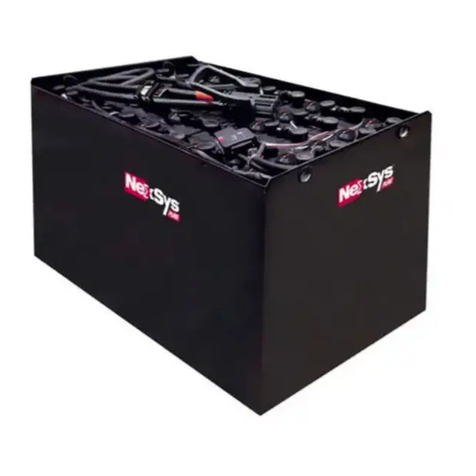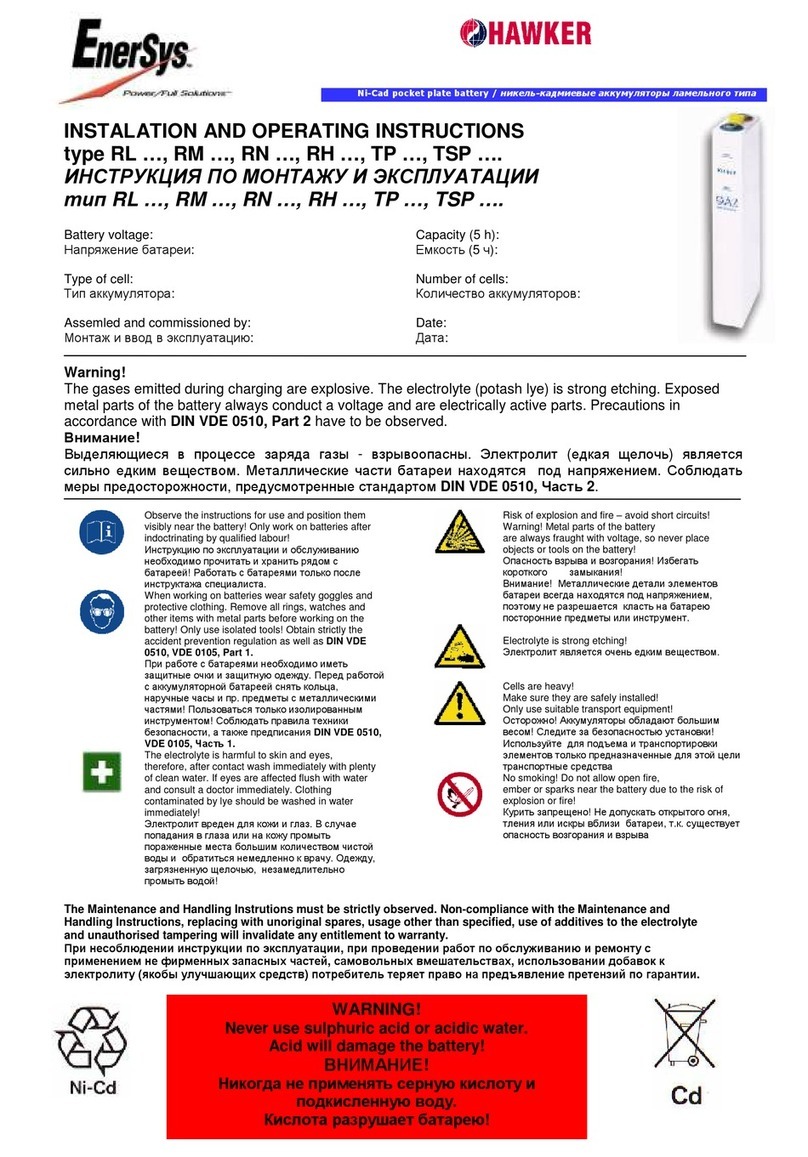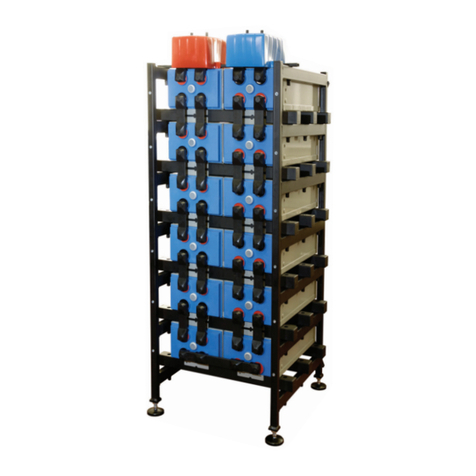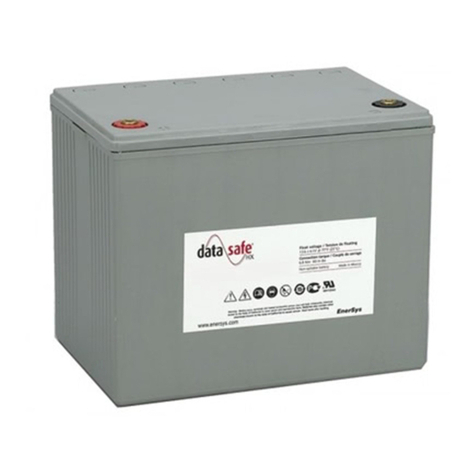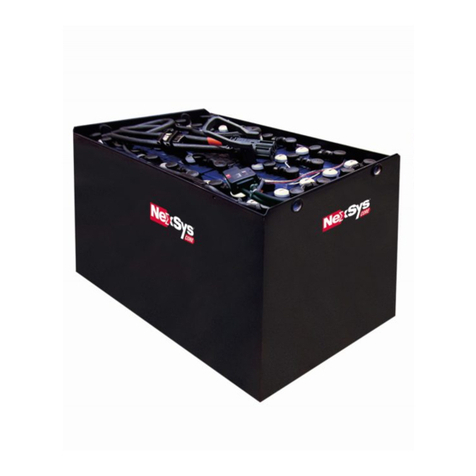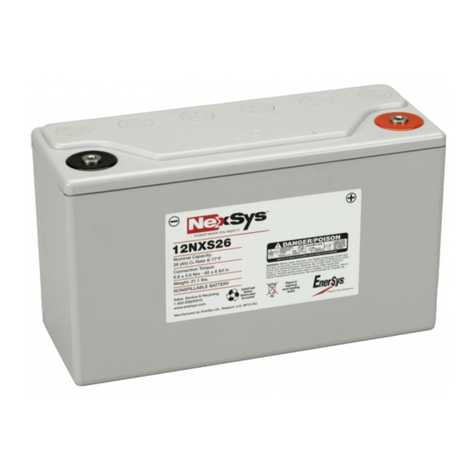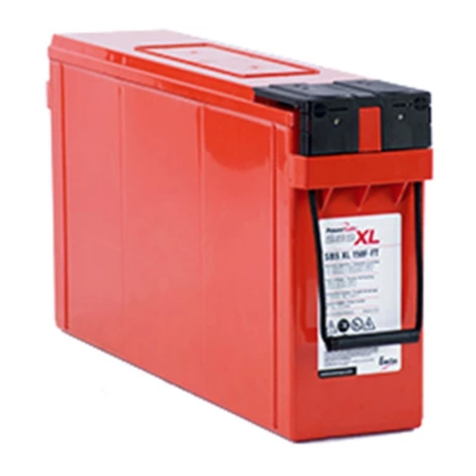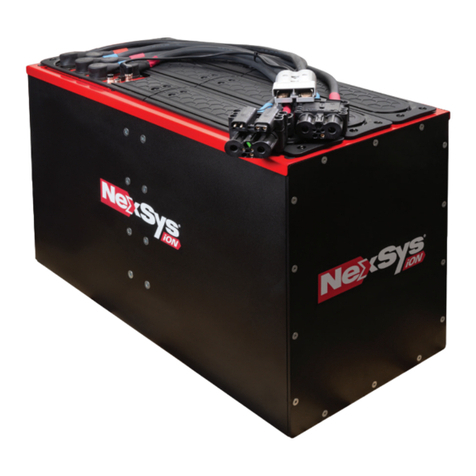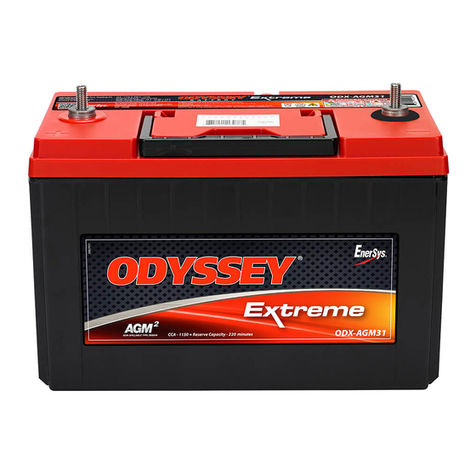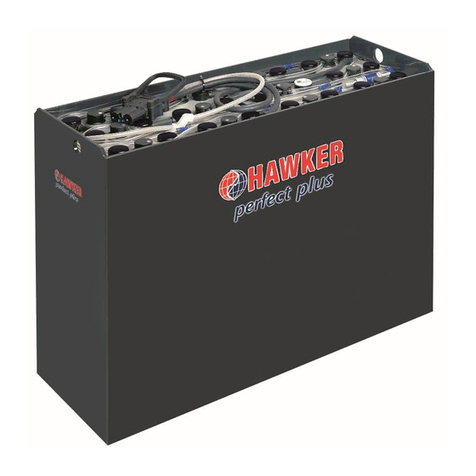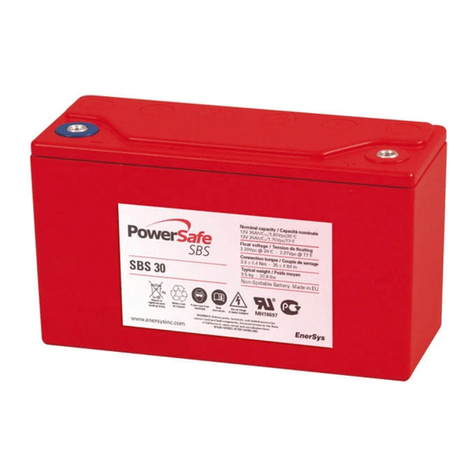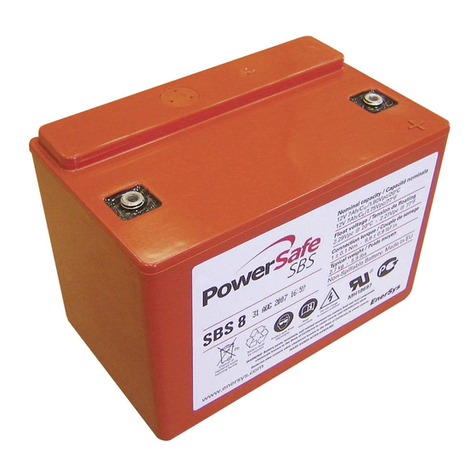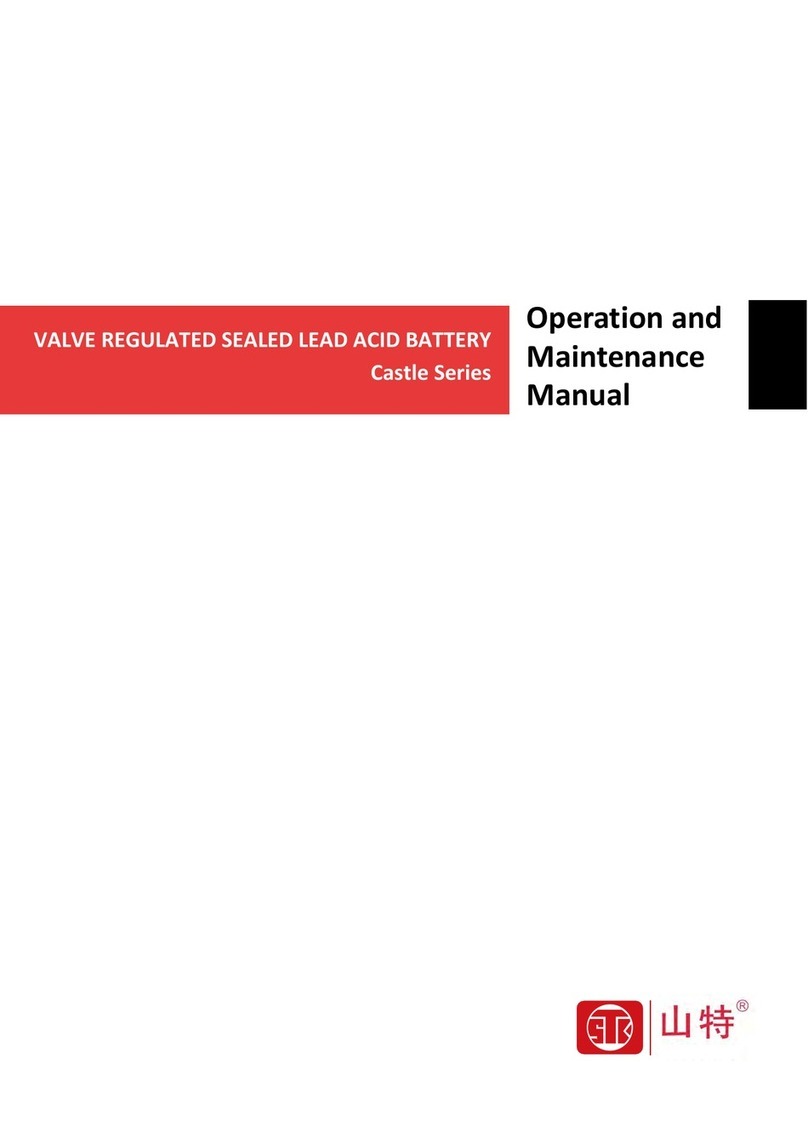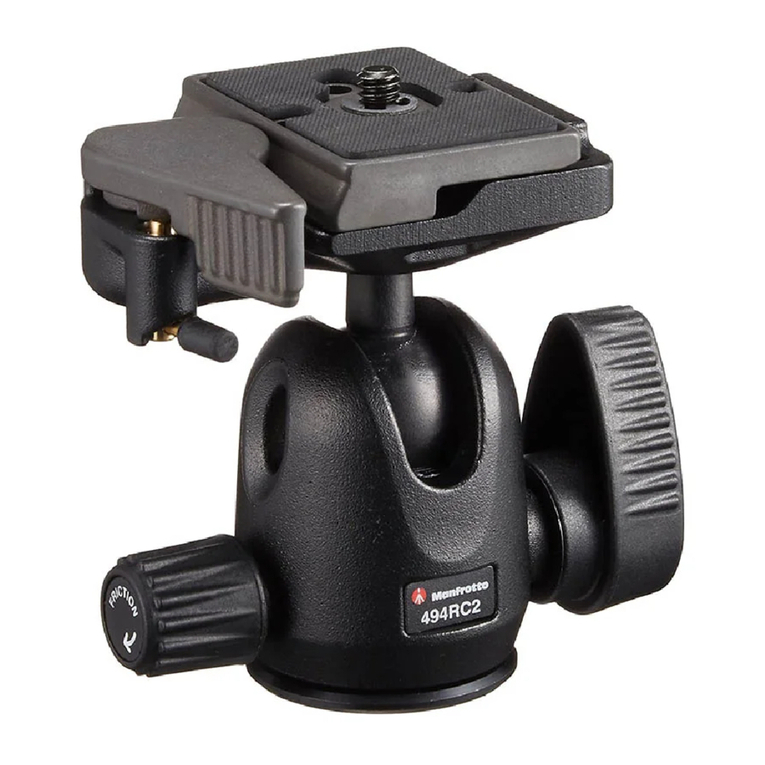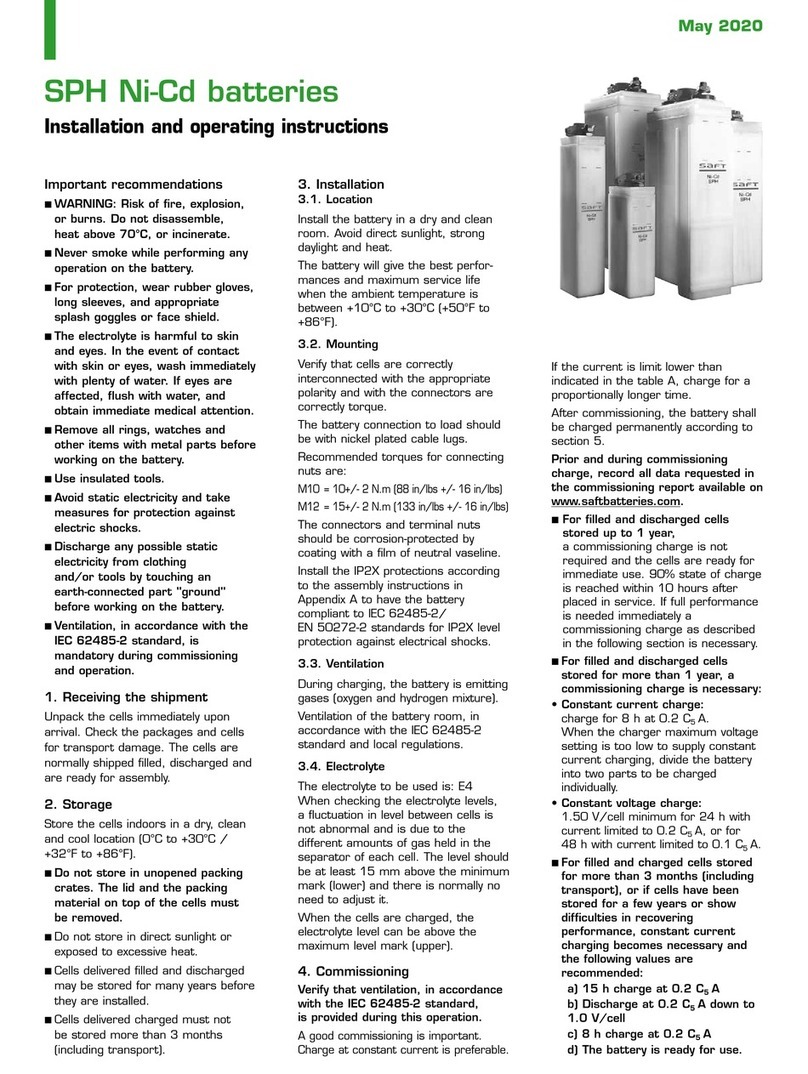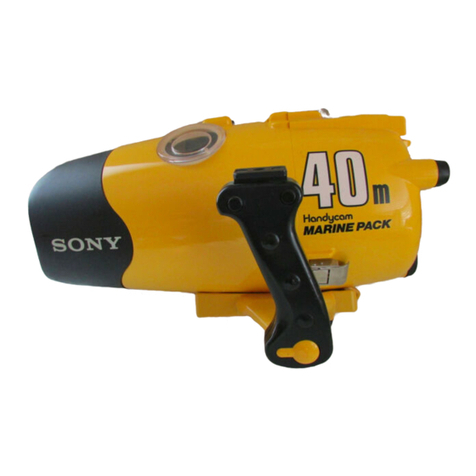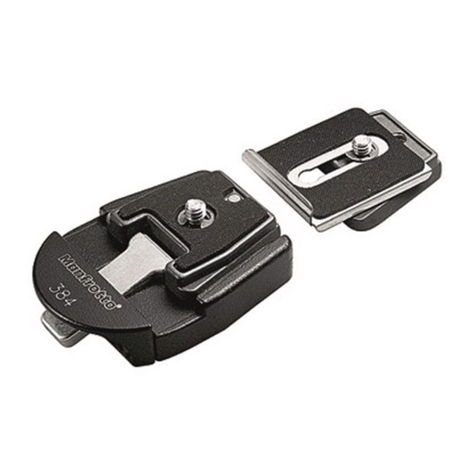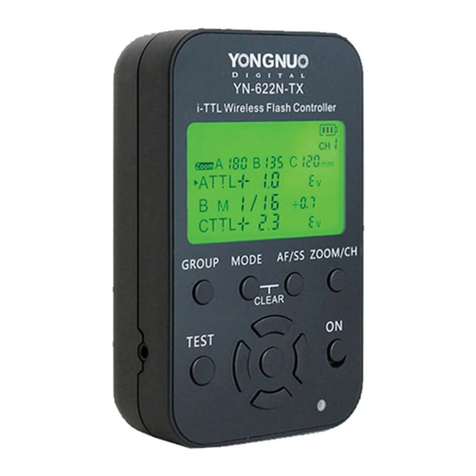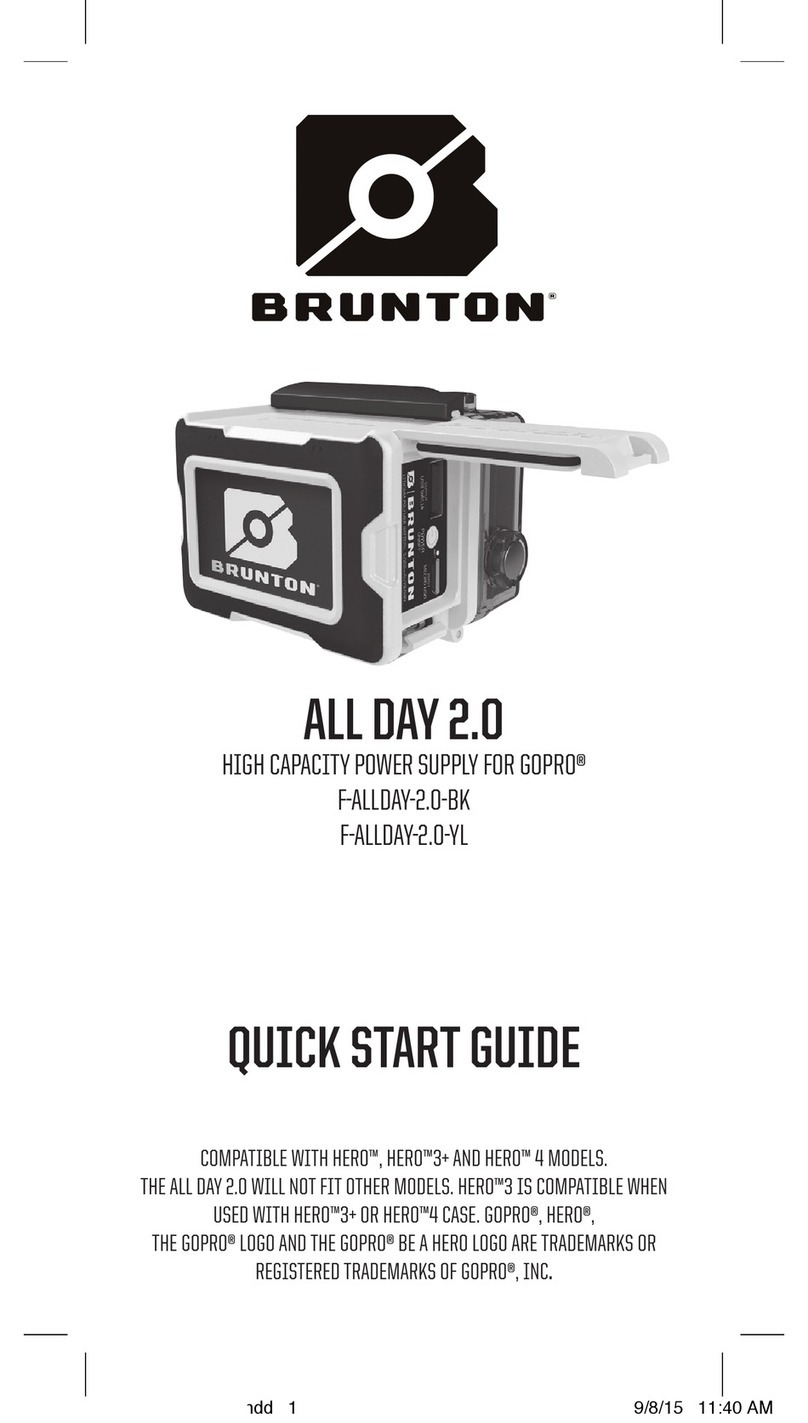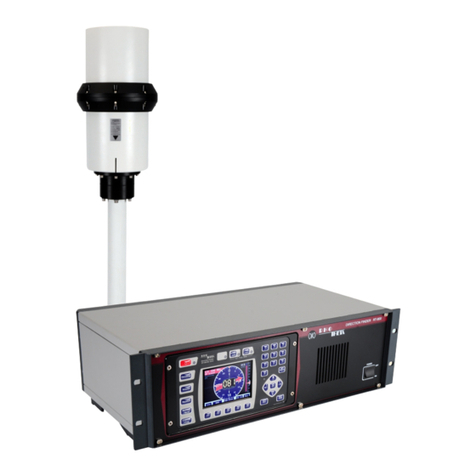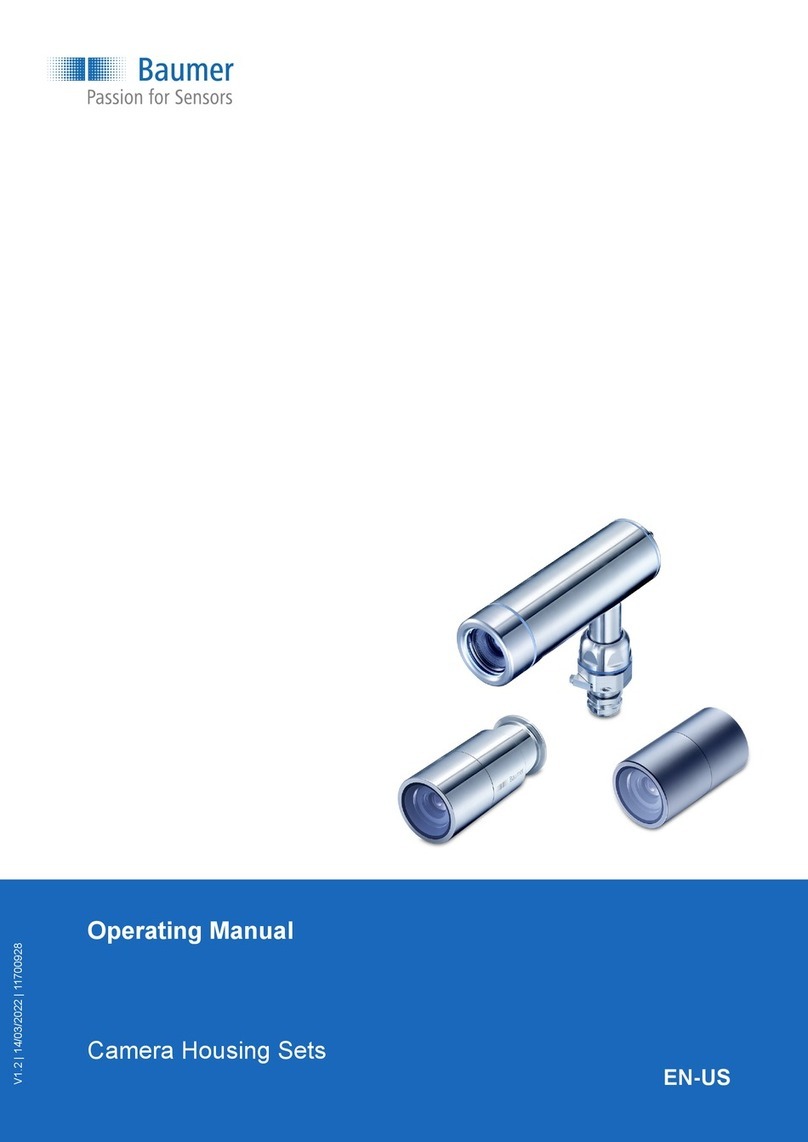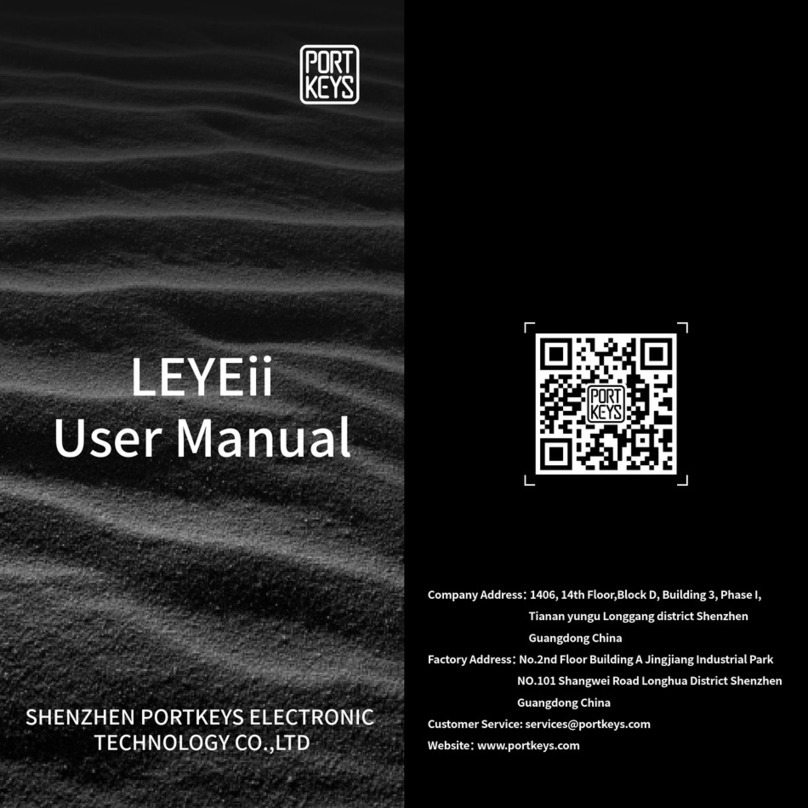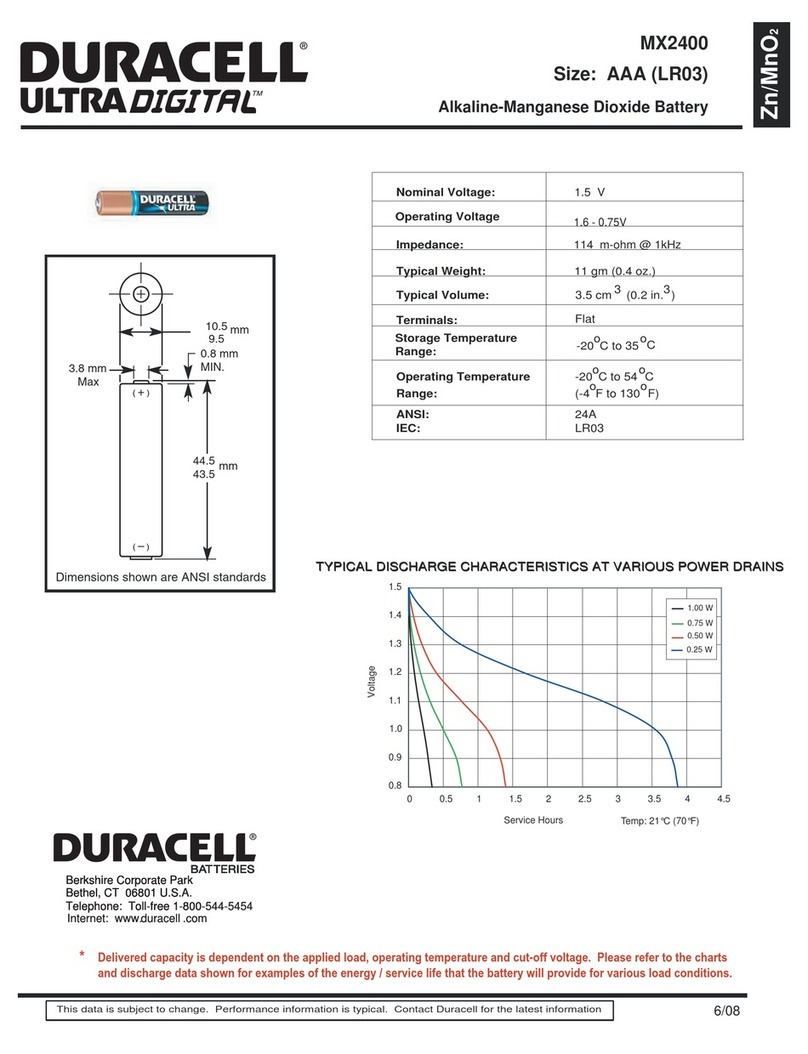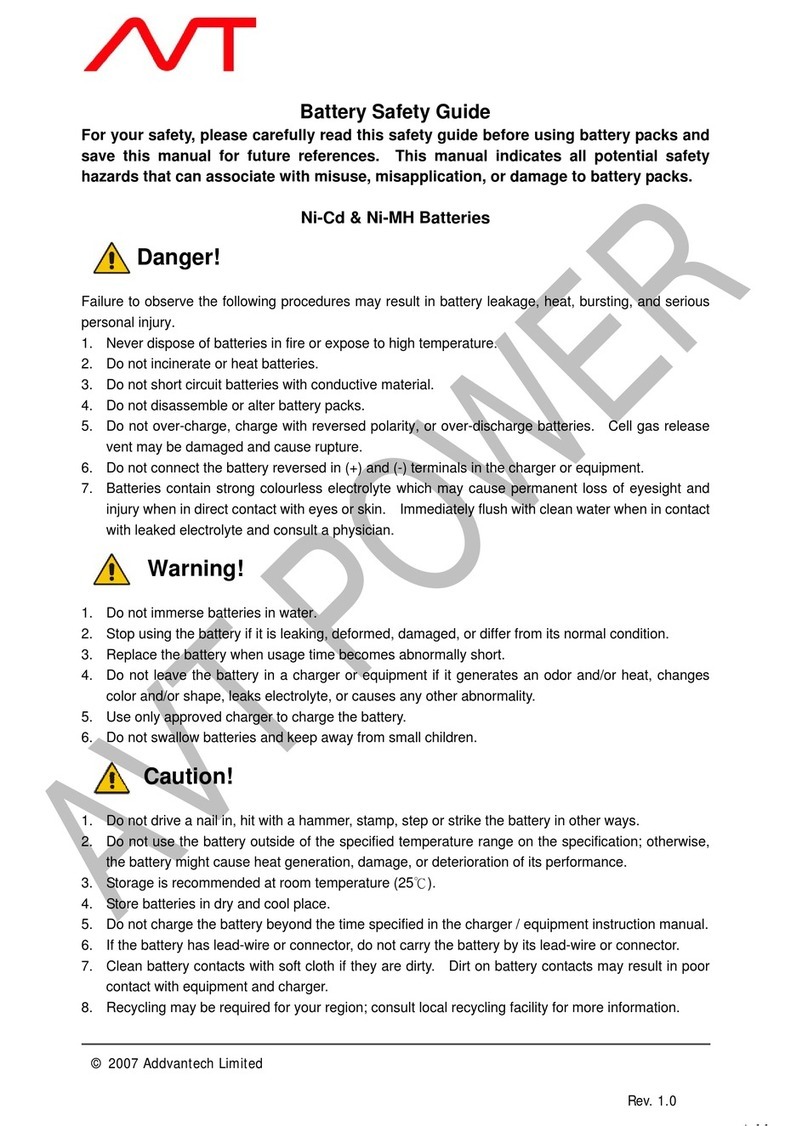
3 Publication No: EN-GAZ-Standard-IOM 001 Dec 2012
During th charg th l ctrolyt l v l
and t mp ratur should b obs rv d
(s point 5.4). Th l ctrolyt l v l
should n v r fall b low th “MIN” mark.
Batt ry d liv r d fill d and charg d
and stor d for mor than 12 months/
the battery should be charged for 15 hours
at the rated charging current 0.2 It A.
Approxi ately 4 hours after the end of
charging, the electrolyte level should be
adjusted to the upper electrolyte level
ark “MAX” by using distilled or deionized
water in accordance with IEC 60993. For
cells with steel cases, the electrolyte level
should be adjusted to the axi u level
according to the “Instruction for the control
of electrolyte level”. During th charg
th l ctrolyt l v l and t mp ratur
should b obs rv d (s point 5.4). Th
l ctrolyt l v l should n v r fall b low
th “MIN” mark.
Batt ry d liv r d fill d and charg d/ a 5
hour charge at the rated charging current
0.2 It A ust be carried out before putting
the battery into operation. Approxi ately 4
hours after the end of charging, the
electrolyte level should be adjusted to the
upper electrolyte level ark “MAX” by
using distilled or deionized water in
accordance with IEC 60993. For cells with
steel cases, the electrolyte level should be
adjusted to the axi u level according
to the “Instruction for the control of
electrolyte level”. During th charg th
l ctrolyt l v l and t mp ratur
should b obs rv d (s point 5.4). Th
l ctrolyt l v l should n v r fall b low
th “MIN” mark.
3.5.2 Commissioning with constant
voltag
If the charger´s axi u voltage setting
is too low to supply constant current
charging, divide the battery into two parts
that will be charged individually.
Batt ry d liv r d unfill d and
discharg d / after a period of 5 hours
fro filling the electrolyte, the battery
should be charged for 30 hours at the
rated charging voltage of 1.65 V/cell. The
current li it should be 0.2 It A axi u .
Approxi ately 4 hours after the end of
charging, the electrolyte level should be
adjusted to the upper electrolyte level
ark “MAX” by using only genuine
electrolyte. For cells with steel cases, the
electrolyte level should be adjusted to the
axi u level according to the
“Instruction for the control of electrolyte
level”. During th charg th l ctrolyt
l v l and t mp ratur should b
obs rv d (s point 5.4). Th
l ctrolyt l v l should n v r fall b low
th “MIN” mark.
Batt ry d liv r d fill d and discharg d
/
the battery should be charged for 30
hours at the rated charging voltage of 1.65
V/cell. The current li it should be 0.2 It A
axi u . Approxi ately 4 hours after the
end of charging, the electrolyte level
should be adjusted to the upper
electrolyte level ark “MAX” by using
distilled or deionized water in accordance
with IEC 60993. For cells with steel cases,
the electrolyte level should be adjusted to
the axi u level according to the
“Instruction for the control of electrolyte
level. During th charg th l ctrolyt
l v l and t mp ratur should b
obs rv d (s point 5.4). Th
l ctrolyt l v l should n v r fall
b low th “MIN” mark.
Batt ry d liv r d fill d and charg d
and stor d for mor than 12 months/
the battery should be charged for 30 hours
at the rated charging voltage of 1.65
V/cell. The current li it should be 0.2 It A
axi u . Approxi ately 4 hours after the
end of charging, the electrolyte level
should be adjusted to the upper electrolyte
level ark “MAX” by using distilled or
deionized water in accordance with IEC
60993. For cells with steel cases, the
electrolyte level should be adjusted to the
axi u level according to the
“Instruction for the control of electrolyte
level”. During th charg th l ctrolyt
l v l and t mp ratur should b
obs rv d (s point 5.4). Th
l ctrolyt l v l should n v r fall b low
th “MIN” mark.
Batt ry d liv r d fill d and charg d/ a
10 hour charge at the rated charging
voltage of 1.65 V/cell ust be carried out
before putting the battery into operation.
The current li it should be 0.2 It A
axi u . Approxi ately 4 hours after the
end of charging, the electrolyte level
should be adjusted to the upper electrolyte
level ark “MAX” by using distilled or
deionized water in accordance with IEC
60993. For cells with steel cases, the
electrolyte level should be adjusted to the
axi u level according to the
“Instruction for the control of electrolyte
level”. During th charg th l ctrolyt
l v l and t mp ratur should b
obs rv d (s point 5.4). Th
l ctrolyt l v l should n v r fall b low
th “MIN” mark.
4. Charging in Op ration
4.1 Continous batt ry pow r supply
(with occasional battery discharge)
Reco ended charging voltage for
a bient te peratures + 20 °C to + 25 °C.
Do not re ove the vent caps during float-,
boost charge and buffer operation. The
current li it should be 0.3 It A axi u in
general.
Floating: 1.40 – 1.42 V/cell
Boost charge: 1.55 – 1.70 V/cell
A high voltage will increase the speed and
efficiency of recharging the battery.
4.1.3 Singl l v l charg
1.45 – 1.50 V/cell
4.2 Buff r op ration
Where the load exceeds the charger
rating.
1.45 – 1.55 V/cell
5. P riodic Maint nanc
The battery ust be kept clean using only
water. Do not use a wire brush or solvents
of any kind. Vent caps can be rinsed in
clean water if necessary but ust be dried
before using the again.
Check regularly (approxi ately every 6
onths) that all connectors, nuts and
screws are tightly fastened. Defective vent
caps and seals should be replaced. All
etal parts of the battery should be
corrosion-protected by coating with a thin
layer of anti-corrosion grease. Do not
coat any plastic part of th batt ry, for
xampl c ll cas s!
Check the charging voltage. If a battery is
parallel connected it is i portant that the
reco ended charging voltage re ains
unchanged. The charging current in the
strings should also be checked to ensure it
is equal. These checks have to be carried
out once a year. High water consu ption
of the battery is usually caused by
i proper voltage setting of the charger.
5.1 Equalizing charg
It is reco ended to carry out an
equalizing charge once a year to aintain
capacity and to stabilize the voltage levels
of the cells. The equalizing charge can be
carried out for 15 hours at 0.2 It A or with
the boost charging stage in confor ity with
the characteristic curve of the available
charging equip ent. The electrolyte level
ust be checked after an equalizing
charge.
In order to equalize the floating derating
effect, it is reco ended to charge the
battery once a year for 15 hours at the
rated charging current 0.2 It A. Then
discharge the battery down to 1.0 V/cell
and charge again for 8 hours at the rated
charging current 0.2 It A.










